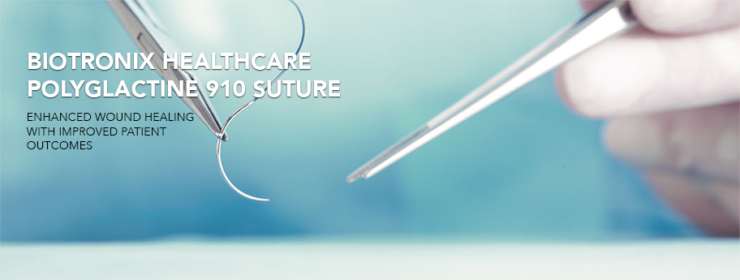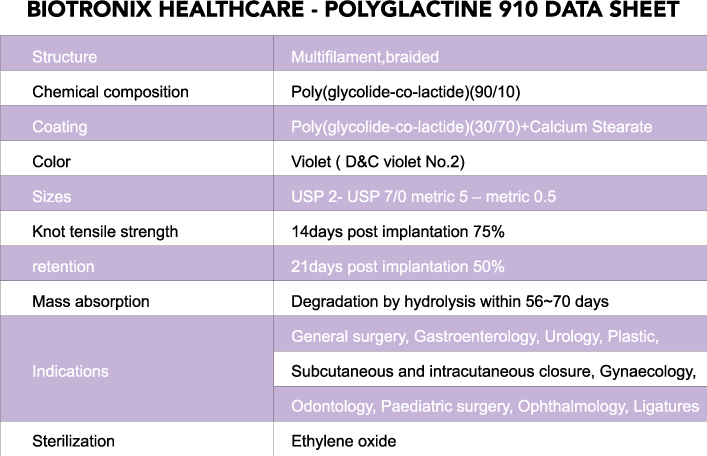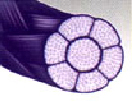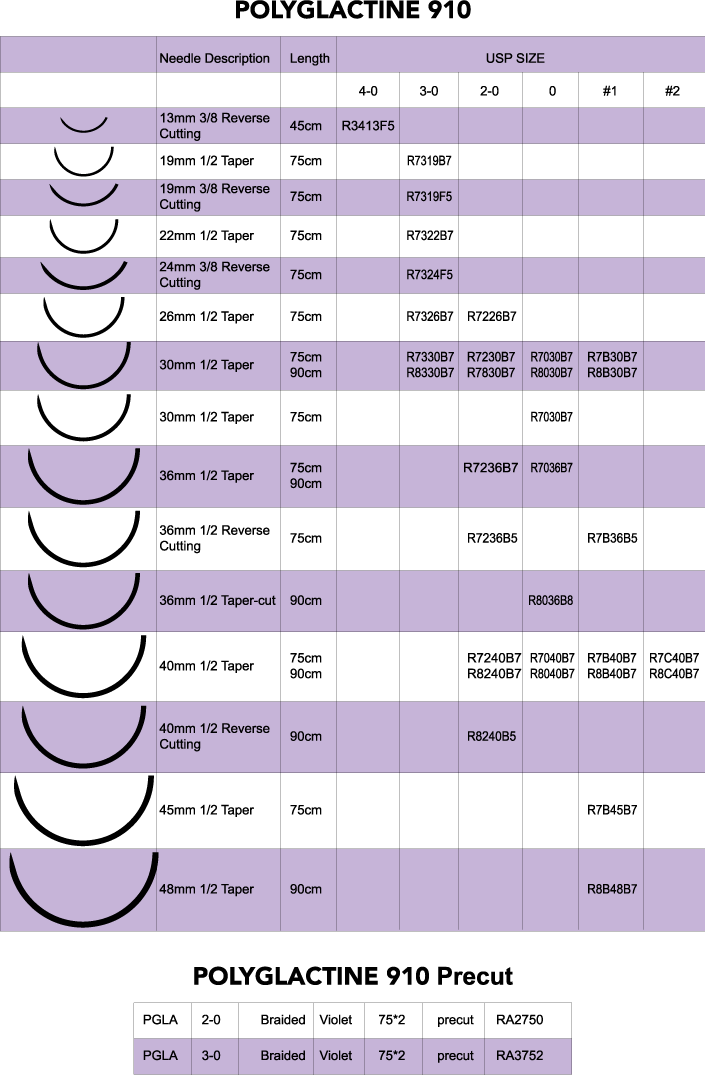Sutures Needles
Category
NEED MORE
INFORMATION
CONTACT US
Biotronix Healthcare Customer Service Associates are available 8:30am to 5:pm EST Monday thru Friday
North America Customer Service
Tel: (954) 320-6088
(954) 440-1572
customerservice@biotronixhealthcare.com
International Customer Service
Tel: (289) 813-0159
(416) 876-5035
customerservice@biotronixhealthcare.com
______________________________________
Sales and Orders
Tel: (954) 266-8944
sales@biotronixhealthcare.com
______________________________________
Regulatory Affairs
regulatory@biotronixhealthcare.com
______________________________________
Accounting Department
accounting@biotronixhealthcare.com
______________________________________
Call to speak with a knowledgeable Biotronix Healthcare specialist today.

Polyglactin 910
Biotronix Healthcare Polyglactin 910 suture are synthetic absorbable multifilament sutures composed of 90% Glycolide and 10% L-lactide.
Biotronix Healthcare Polyglactin 910 has minimal tissue reactivity during the absorption process, superior tensile strength and excellent knotting security. Biotronix Polyglactin 910 suture holds more than 75% of its tensile strength at 14 days, and complete absorption at 180 days.

Applications:
 Polyglactin 910 suture are ideal for use in soft tissue approximation and or ligation including use in ophthalmic procedures, but for use in cardiovascular and neurological procedures.
Polyglactin 910 suture are ideal for use in soft tissue approximation and or ligation including use in ophthalmic procedures, but for use in cardiovascular and neurological procedures.
Characteristics of Biotronix Healthcare Polyglactin 910 suture:
• Coating for easy tissue passage
• Minimal tissue reactivity
• High tensile strength and smooth knot tie down
• Maintains 75% of tensile strength at 14 days
• Maintains 50% tensile strength at 21 days
• Maintains 25% tensile strength at 28 days
• Complete absorption in 56 to 72 days from implantation
Packaging:
Individually packaged 12 or 36 per box. Also available in reels.
Contraindications:
Polyglactin 910 suture, being absorbable, should not be used where extended approximation of tissue is required.
Warnings:
Users should be familiar with surgical procedures and techniques involving absorbable sutures before employing Polyglactin 910 suture for wound closure, as risk of wound dehiscence may vary with the site of application and the suture material used. Physicians should consider the in vivo performance when selecting a suture. The use of this suture may beinappropriate in elderly, malnourished, or debilitated patients, or in patients suffering from conditions which may delay wound healing. As this is an absorbable suture material, the use of supplemental non absorbable sutures should be considered by the surgeon in the closure of the sites which may undergo expansion, stretching or distention, or which may require additional support. Do
not resterilize. Discard opened packages and unused sutures. As with any foreign body, prolonged contact of any suture with salt solutions, such as those found in the urinary or biliary tracts may result in calculus formation. As an absorbable suture, Polyglactin 910 suture may act transiently as a foreign body. Acceptable surgical practice should be followed for the management of contaminated or infected wounds.
Precautions:
Skin sutures which must remain in place longer than 7 days may cause localized irritation and should be snipped off or removed as indicated.
Under some circumstances, notably orthopaedic procedures, immobilization of joints by external support may be employed at the discretion of the surgeon. Consideration should be taken in the use of absorbable sutures in tissues with poor blood supply as suture extrusion and delayed absorption may occur. In handling this or any other suture, care should be taken to avoid damage from handling. Avoid crushing or crimping damage due to application of surgical instruments such as forceps or needle holders. Polyglactin 910 sutures, which are treated to enhance handling characteristics, require the accepted surgical technique of flat and square ties with additional throws as warranted by surgical circumstance and the experience of the surgeon. Avoid prolonged exposure to elevated temperatures.
To avoid damaging needle points and swage areas, grasp the needle in an area one-third (1/3) to one-half (1/2) of the distance from the swaged end to the point. Reshaping needles may cause them to lose strength and be less resistant to bending and breaking. Users should exercise caution when handling surgical needles to avoid inadvertent needle sticks. Discard used needles in “sharps” container.
Adverse reactions:
Adverse effects associated with the use of this device include wound dehiscence, failure to provide adequate wound support in closure of the sites where expansion, stretching, or distension occur, failure to provide adequate wound support in elderly, malnourished or debilitated patients or in patients suffering from conditions which may delay wound healing, infection, minimal acute inflammatory tissue reaction, localized irritation when skin sutures are left in place.

